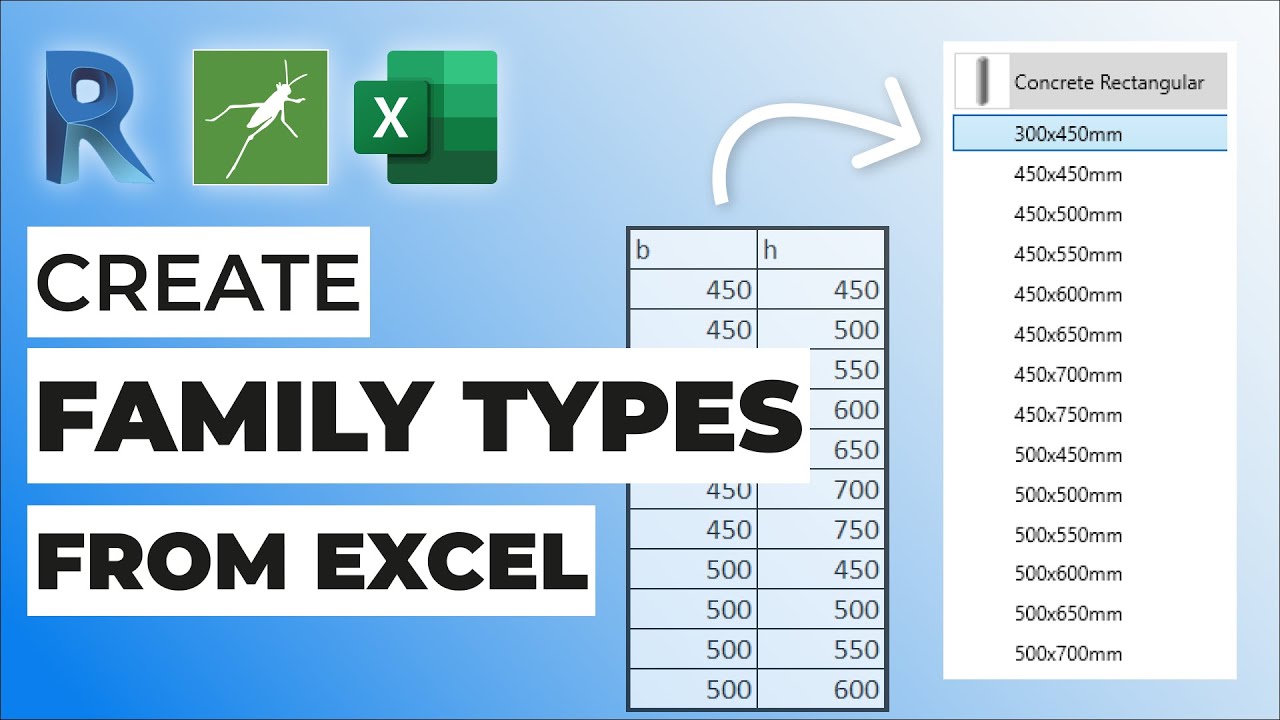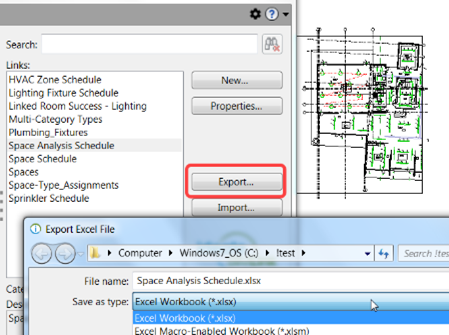Revit Tools: Your Secret to Accuracy and Productivity
Wiki Article
Breaking Obstacles: Excel Importation Techniques for Advanced Revit Users
Check out various information importation methods and master Excel assimilation to improve your Revit modeling capacities. With our methods and tips, you can get over importation challenges and come to be a true specialist in utilizing Excel for your Revit jobs.Advanced Revit Users: Leveraging Excel for Importation
You can conveniently leverage Excel for importation as an innovative Revit user. Excel is an effective tool that can substantially enhance your process and performance in Revit. With its capability to take care of large quantities of information and perform complicated estimations, Excel can be an useful property in managing and arranging your project info.One means to take advantage of Excel for importation is by utilizing the "Web link Excel" feature in Revit. This function allows you to link an Excel spreadsheet straight right into your Revit project, enabling you to upgrade and integrate information between the two programs. This can be specifically useful when taking care of routines or tracking adjustments in your task.
An additional way to use Excel is by utilizing the "Import/Export" function in Revit. This attribute permits you to import and export information in between Revit and Excel, offering you the adaptability to deal with data in both programs. You can import data from Excel into Revit to produce aspects such as spaces, walls, or doors, and you can also export data from Revit to Excel for further analysis or reporting.

Exploring Data Importation Approaches in Revit Making Use Of Excel
Discovering how to import information from Excel right into Revit offers efficient methods for incorporating information. When you import data from Excel, you can perfectly transfer data such as room schedules, material lists, and tools information right into your Revit task. This procedure permits you to conserve time and effort by preventing hands-on data entry.To import data from Excel into Revit, you can make use of the "Import/Export" attribute. This function enables you to map the Excel data fields to the equivalent Revit criteria, ensuring that the details is appropriately appointed within the design. By selecting the appropriate import alternatives, you can regulate exactly how the data is imported and exactly how it communicates with your project.
An additional approach for importing data from Excel into Revit is by utilizing Dynamo. Dynamo is a visual shows tool that integrates with Revit and permits you to automate tasks and workflows. With Dynamo, you can create personalized manuscripts that import data from Excel and manipulate it within your Revit task. This technique offers also more adaptability and modification choices.
Grasping Excel Integration for Advanced Revit Modeling
Mastering Excel combination for advanced Revit modeling includes utilizing effective approaches to perfectly move data and automate jobs within your task. By taking advantage of the power of Excel, you can enhance your Revit modeling process and conserve valuable time. One crucial technique is importing data from Excel spread sheets directly right into your Revit version. This allows you to occupy criteria, such as room names or product amounts, with ease. With a couple of simple steps, you can map the Excel columns to the matching Revit criteria and import the data precisely.An additional useful technique is exporting data from Revit to Excel. This allows you to remove details from your version, such as schedules or material quantities, and examine it in Excel making use of solutions, graphes, or various other effective devices. By leveraging the capabilities of Excel, you can carry out intricate estimations, create custom-made reports, and gain useful understandings right into your task.
In enhancement to information transfer, Excel integration can automate repeated tasks in Revit. By producing macros or scripts in Excel, you can automate processes like creating views, producing sheets, or applying common family members - import excel into revit. This not just conserves time yet likewise guarantees consistency across your project
To master Excel assimilation in Revit, it is critical to recognize the information structure and how Revit connects with Excel. By acquainting on your own with the offered tools and techniques, you can open the complete capacity of Excel integration and take your Revit modeling to the next level.
Conquering Importation Obstacles: Excel Techniques for Revit Professionals
When getting rid of importation difficulties, it is very important to be accustomed to effective Excel methods that can profit specialists in Revit. As a sophisticated Revit user, you recognize the relevance of effortlessly importing data from Excel right into your tasks. You may come across various difficulties along the way. By making use of efficient Excel strategies, you can conquer these obstacles and improve your productivity.
An additional helpful strategy is using the "Transpose" feature in Excel. This permits you to convert information from rows to columns or the other way around. When importing data into Revit, this can be specifically helpful when you have information in a vertical format in Excel, however you require it to be in a horizontal style in Revit.
In addition, utilizing Excel formulas such as VLOOKUP and INDEX-MATCH can considerably assist in mapping information from Excel to Revit. These solutions allow you to look for certain worths in Excel and recover matching information from an additional column. This can save you effort and time when importing huge datasets into Revit.
Excel Information Importation Tips and Tricks for Advanced Revit Users
By familiarizing on your own with effective Excel tips and techniques, you can enhance your information importation procedure as an advanced user of Revit. Excel is a powerful device that can substantially promote the importation of data into Revit, saving you time and raising your productivity. One useful tip is to utilize the "Text to Columns" feature in Excel to divide data into different columns based upon a delimiter. This can be specifically useful when you have information in a solitary column that needs to be divided into multiple columns in Revit. Furthermore, utilizing Excel's "Paste Special" function permits you to paste data from Excel right into Revit while keeping formatting, such as cell color or font design. This can be particularly helpful when importing information that needs particular formatting in Revit. Another handy method is to utilize Excel's "Find and Replace" feature to quickly make adjustments to your data before importing it right into Revit. You can conveniently replace particular message or characters with others, conserving you the time and initiative of manually modifying the data in Revit. By using these Excel moved here ideas and techniques, you can improve your information importation procedure and come to be a lot more skilled in making use of Revit.
Conclusion
You have now found out valuable techniques for importing information from Excel into Revit as a sophisticated customer. Go ahead, break those obstacles and succeed in your Revit projects!
When importing information right into Revit, this can be specifically More Info handy when you have information in a vertical layout in Excel, but you need it to be in a straight layout in Revit.
Furthermore, using Excel formulas such as VLOOKUP and INDEX-MATCH can greatly assist in mapping data from Excel to Revit. Additionally, utilizing Excel's "Paste Special" feature permits you to paste information from Excel right into Revit while maintaining format, such as cell shade or font design.
Report this wiki page